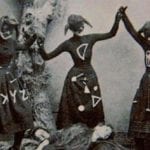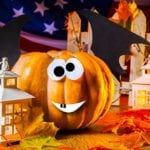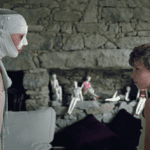 Weird Stuff
Weird Stuff  Weird Stuff
Weird Stuff  Mysteries
Mysteries 10 Tragic Disappearances and Deaths in Joshua Tree National Park
 History
History 10 Ways Childhood Really Sucked in the Old West
 Music
Music 10 Name Origins of Famous Bands from the 1990s
 Religion
Religion 10 Biggest Turnarounds by the Catholic Church
 Weird Stuff
Weird Stuff 10 Unbelievable Times Laws Had Unintended Consequences
 Humans
Humans Ten Historic Women Who Deserve Way More Credit Than They Got
 Movies and TV
Movies and TV 10 Films That Spawned Major Lawsuits
 History
History Ten Times Towns Were Wiped Off the Face of the Earth
 Creepy
Creepy 10 of the Most Disturbingly Haunted Public Houses in the UK
 Weird Stuff
Weird Stuff 10 Niche Subcultures That Are More Popular Than You Might Think
 Mysteries
Mysteries 10 Tragic Disappearances and Deaths in Joshua Tree National Park
 History
History 10 Ways Childhood Really Sucked in the Old West
Who's Behind Listverse?

Jamie Frater
Head Editor
Jamie founded Listverse due to an insatiable desire to share fascinating, obscure, and bizarre facts. He has been a guest speaker on numerous national radio and television stations and is a five time published author.
More About Us Music
Music 10 Name Origins of Famous Bands from the 1990s
 Religion
Religion 10 Biggest Turnarounds by the Catholic Church
 Weird Stuff
Weird Stuff 10 Unbelievable Times Laws Had Unintended Consequences
 Humans
Humans Ten Historic Women Who Deserve Way More Credit Than They Got
 Movies and TV
Movies and TV 10 Films That Spawned Major Lawsuits
 History
History Ten Times Towns Were Wiped Off the Face of the Earth
 Creepy
Creepy 10 of the Most Disturbingly Haunted Public Houses in the UK
Top 10 Common Misconceptions About Halloween
It’s Halloween time where we decorate the house in horrors, the kids get dressed up in spooky costumes and hit the streets door knocking and shouting trick-or-treat at strangers with dreams of boundless candy.
It’s one of the Western world’s strangest customs, with North America taking the lead, so where does it all come from and why do we do it? The reality there’s a lot of misconceptions about October 31 which has evolved over time.
Top 10 Coolest Halloween Traditions Across America
10 Halloween is an American convention
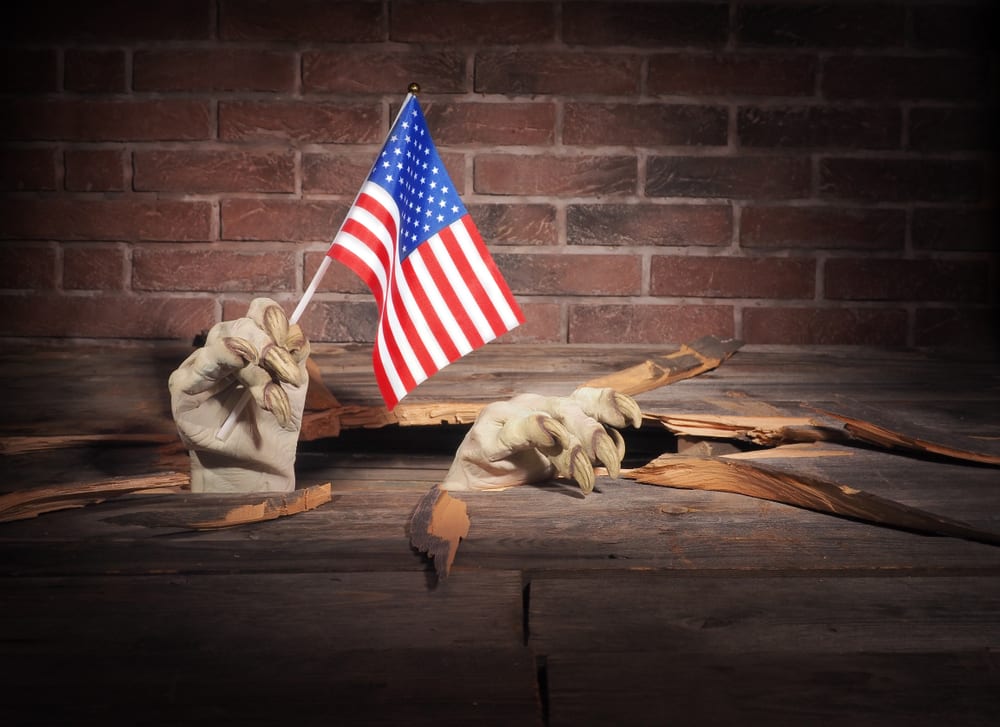
Halloween is often considered American, given how widely the day is celebrated across the United States. The number of Hollywood movies focused on it perpetuated this myth too!
But the reality is Halloween has been traced back to Celtic and Gaelic roots, namely places such as Ireland, Scotland and the Isle of Man. The actual celebration is the eve of the Western Christian feast of All Hallows’ Day, with the word Halloween becoming a contraction of the term All Hallows’ evening over time.
Halloween derived from folk customs of Celtic nations with a big Christianity influence. The Celtic festival of Samhain, which marked the end of the harvest season and the beginning of the winter and was celebrated on October included customs such as lighting bonfires, guising (wearing costumes) and people going door-to-door in exchange for food.
Halloween has evolved a lot since, but its origins are not American at all. There are minimal mentions of Halloween in American history until the 19th century, which coincided with the mass Irish and Scottish immigration to the United States.[1]
9 Halloween is unsafe for children
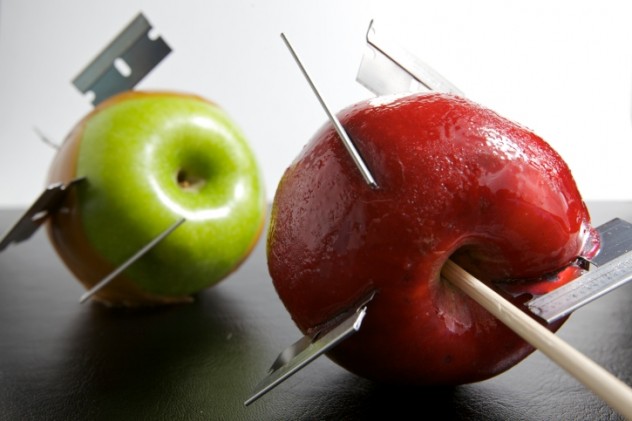
There’s been plenty of negative media stories emanate from Halloween around safety to children, particularly given the inherent risks associated with some of the customs, namely kids roaming the streets at night and trusting strangers to feed them, in essence.
Marijuana-infused candy or razor blades inserted in candy apples are some of the horror stories, while there’s also fears about children being preyed on and kidnapped on Halloween too.
But the statistics show that children aren’t at any greater risk of being kidnapped on Halloween than any other day of the year (don’t be confused by the trunk-or-treat concept!).
Likewise according to NBC Chicago, there’s only been two confirmed deaths from tainted Halloween candy and in both incidents it was the family at fault, not a stranger. Children playing pranks were also found to be responsible for razor blades in candy apples stories.
The one risk is cars, with the increased pedestrian traffic meaning there’s more likely to be unfortunate accidents, with stats backing that up.[2]
8 Jack-O’-Lanterns have always been pumpkins
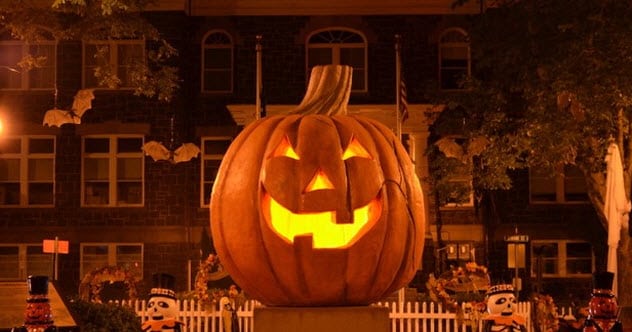
When you think about, the tradition of carving pumpkins hollow and illuminating them with a candle is pretty odd. But it originates from drunkard Irish legend Stingy Jack who was a dreg on society as a con man. Such was his nature, Stingy Jack deceived Satan on a few occasions when he seemed set to meet his demise.
Eventually Satan caught up with Stingy Jack when he passed away but he wasn’t permitted to enter Heaven due to his sinful lifestyle. He tried to enter the Gates of Hell but was denied by Satan who condemned him to roam the world between the planes of good and evil in darkness until the end of eternity. All Stingy Jack had was an ember inside a hollowed root vegetable, which was a rutabaga or turnip, not a pumpkin, as is the modern take.
Stingy Jack had many different monikers including Jack the Smith, Drunk Jack, Flaky Jack, and Jack of the Lantern. Whether or not this is the real story behind jack-o’-lanterns isn’t certain as there’s a bunch of different versions, but the Irish claim it as folklore, including the turnip.
The tradition subsequently started to carve root veggies to ward away evil spirits like Stingy Jack. The reality is pumpkin are softer and much easier to carve.[3]
7 Hide your black cats!
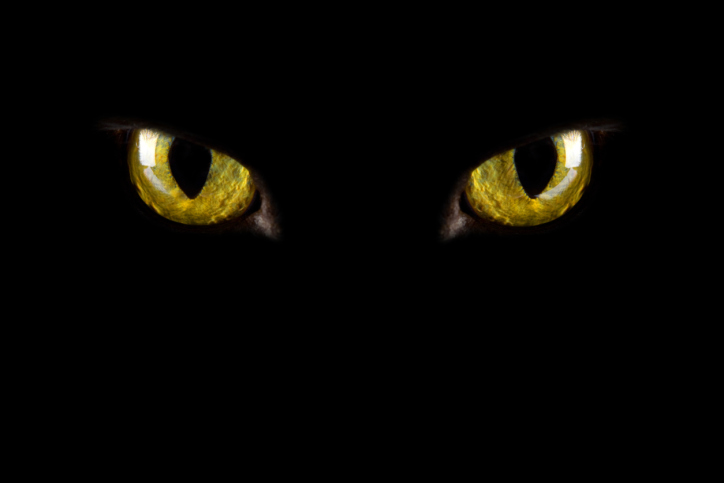
In Western culture, black cats have often been superstitiously viewed as a symbol of evil omens or bad luck. Salem, who was a 500-year-old witch trapped inside a black talking cat in American 90s TV show ‘Sabrina The Teenage Witch’, proliferated this idea!
The point is black cats have long been associated with witches, which obviously has heavy links to Halloween. In the dark ages it was said that witches could turn themselves into black cats and then return back. In the days of burning witches at the stake, often their black cats would be burnt with them.
These Satanic rituals have led to the concept that black cats traditionally were sacrificed over Halloween which is a complete myth. The People for the Ethical Treatment of Animals (PETA) have long banged this drum, exposing shocking and heartbreaking violence inflicted on black cats on Halloween, to the point where animal shelters suspended black cats adoptions in the lead-up to late October.[4]
6 Halloween tattoos are laced with LSD
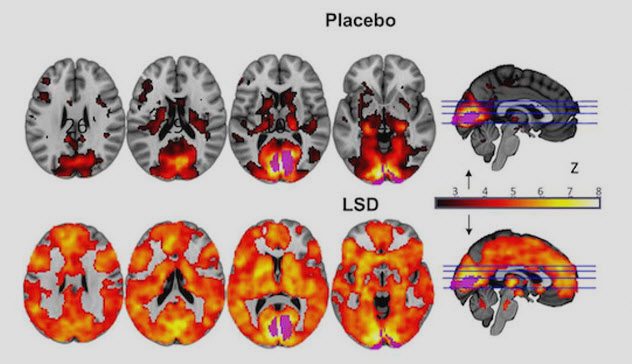
Halloween tends to bring out our craziest fears and thus plenty of media stories do the rounds about bizarre horror stories. One of those from years ago was drug dealers handing out tattoos to kids which were laced with LSD, in what we can only assume was a covert and ambitious ploy to get the youngsters hooked on the stuff. Even if LSD isn’t addictive.
But Bart Simpson had a Halloween trip so who knows! This story did the rounds, given the rise in popularity of tattoos and the increasing use of temporary or stick-on tattoos on Halloween. Snopes looked into this rumour and found that it simply couldn’t be verified at all, with no cases of LSD-laced tattoos found in any Halloween candy bags or giveaways.[5]
Top 10 Halloween Pranks That Went Awry
5 Why do we dress up?

Halloween outfits are always fun and they’re getting increasingly elaborate and wide-ranging, with people often dressing up as super-heroes or Hollywood characters nowadays, moving away from the origins of ghosts, witches and zombies, or essentially the dead.
The custom of dressing up or wearing a costume on Halloween hails from ‘guising’ in Celtic times, when people would go from door-to-door in disguise – the earliest form of trick-or-treating, known as ‘souling’. People often wore masks or ‘false faces’ in these times.
The premise was that the living were spooked by all the unwelcome spirits floating around, so they’d dress up or ‘guised’ as the dead to fool them. If you came across a bad spirit or devil, they’d think you’re one of them given your disguise and leave you alone until next year.
Allegedly it worked and the spirits were fooled, so it became tradition.[6]
4 Why do we eat sweet foods?

Returning to Halloween’s Western Christian roots, there was an encouragement of abstinence from meat on the OId Hallows’ Eve. It’s also worth noting, November 1 or Old Saints Day was a feast day.
As a result, vegetarian foods were often consumed on the day, giving rise to things such as candy apples in modern day Halloween. This also had associations with the time of the year, at the end of the harvest, when fruits and vegetables were aplenty, hence the connections with pumpkins or turnips.
There are other traditional sweet treats such as potato pancakes and soul cakes, the latter not too dissimilar to a hot cross bun. But with time and the American touch that’s evolved into sweet treats, chocolate and candy, which is no surprise given kids love the stuff and trick-or-treating is essentially only performed by children nowadays.[7]
3 ‘The Legend of Sleepy Hollow’ is a Halloween story

Jack-o’-lanterns, ghosts and haunted houses are some examples of Halloween traditions and tales. But ‘the Legend of Sleepy Hollow’ is often included among these, especially the Headless Horseman character, often seen with a jack-o’-lantern, yet Washington Irving’s 1820 gothic story didn’t mention Halloween at all.
The well-known American fiction story has had many popularized incarnations over the years, including the 1999 Tim Burton film and a four-season American TV series in 2010s, so it’s evolved with time. Irving set the story in Tarrytown, in New York up the Hudson River, with the northern part of the town renamed Sleepy Hollow in the 1990s to capitalize on the lore of the story and the Halloween tradition from a tourism perspective.
The original version may have been a dark gothic horror, fitting into the Halloween genre, but there is no written connection from Irving’s original work and the October 31 celebration.[8]
2 Halloween is only popular in North America
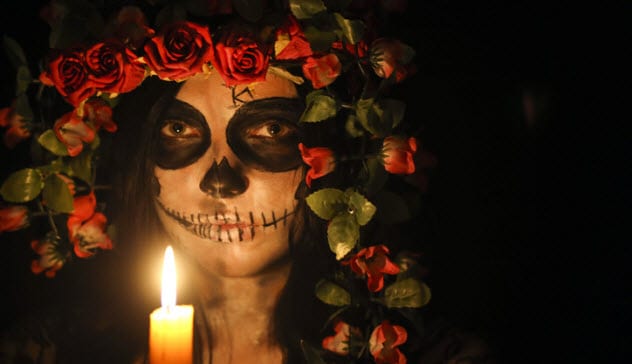
Halloween’s popularity in the United States and Canada is well known and huge. The multitude of American pop culture references pointing to the event confirm that. But it’s often believed that outside of North America, no one really cares for Halloween and it is true far fewer kids trick-or-treat elsewhere in the world.
However, the occasion is celebrated in other places, albeit differently. For example, in the Philippines (with its strong Catholic influence), Halloween is a major holiday, but the celebrations occur in the week leading up to October 31 and continue on to November 2, which is All Souls Day. Filipinos often return to their hometowns for the occasion, and celebrate with flickering candles, fragrant flowers and thoughtful prayers rather than carving pumpkins or getting all spooky in weird costumes.
Similarly, Latin America, Mexico and Spain observes Día de los Muertos, translating to the Day of the Dead, in a three-day celebration from October 31 to November 2. Among the activities are constructing an altar to the dead, decorating it with sweet treats, as well as flowers, photos and candles. Relatives also tidy the gravesites of deceased family members, before gathering at the site on November 2 to reflect and sometimes drink tequila![9]
1 Trick-or-treating has always been about the kids
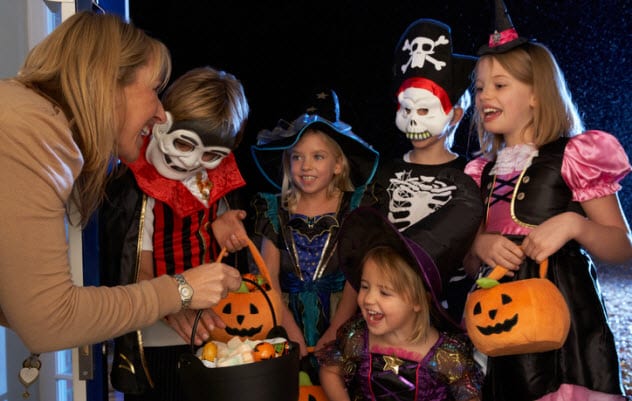
Kids, accompanied by an adult, may do the trick-or-treating nowadays but that wasn’t always the case. As mentioned, ‘souling’ was the original form of door knocking when beggars and poor people would visit the houses of wealthy people to exchange their promise of prayers for the souls of the homeowner’s dead relatives for food, often soul cakes. Beggars would ask under windows: “Mercy on all Christian souls for a soul-cake.”
In a book on Europe’s Hidden Heritage, S.V. Peddle also claimed prior to that door knockers would “personify the old spirits of the winter, who demanded reward in exchange for good fortune.”
It’s understood, the tradition of dressing up or ‘guising’ was adopted by young people and kids a bit later on, lending itself to modern day trick-or-treating. ‘Souling’ evolved into ‘mumming’ where young people got more adventurous and decided to start telling jokes, staging doorstep performances or perform tricks in exchange for food.[10]
The Listverse Compendium Of 113 Halloween Horrors
About The Author: Long-time Australian freelance journalist, having written for global publications including AAP, Sunday Times, FourFourTwo, The AU Review and many more. Follow me on Twitter @BenSomerford
